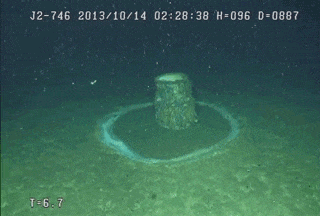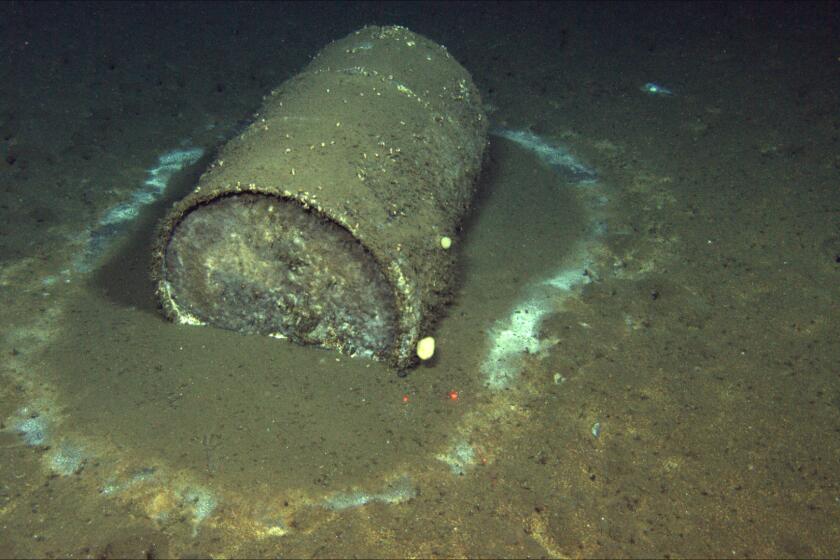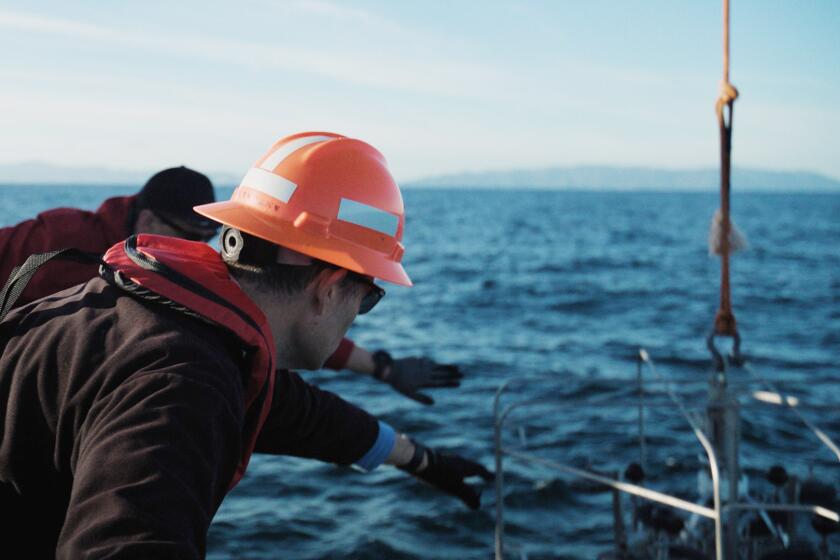Using advanced robotics and an underwater camera, scientists recently discovered World War-II era munitions littered across the seafloor off the coast of Los Angeles. (UC San Diego Scripps Institution of Oceanography)
Itâs not just toxic chemical waste and mysterious barrels that litter the seafloor off the coast of Los Angeles. Oceanographers have now discovered what appears to be a massive dumping ground of military weaponry.
As part of an unprecedented effort to map and better understand the history of ocean dumping in the region, scientists have found a multitude of discarded munition boxes, smoke floats and depth charges lurking 3,000 feet underwater. Most appear to be from the World War II era, and it remains unclear what risk they might pose to the environment.
âWe started to find the same objects by the dozens, if not hundreds, consistently⦠It actually took a few days to really understand what we were seeing on the seabed,â said Eric Terrill, who co-led the deep-ocean survey with Sophia Merrifield at UC San Diegoâs Scripps Institution of Oceanography. âWho knew that right in our backyard, the more you look, the more you find.â
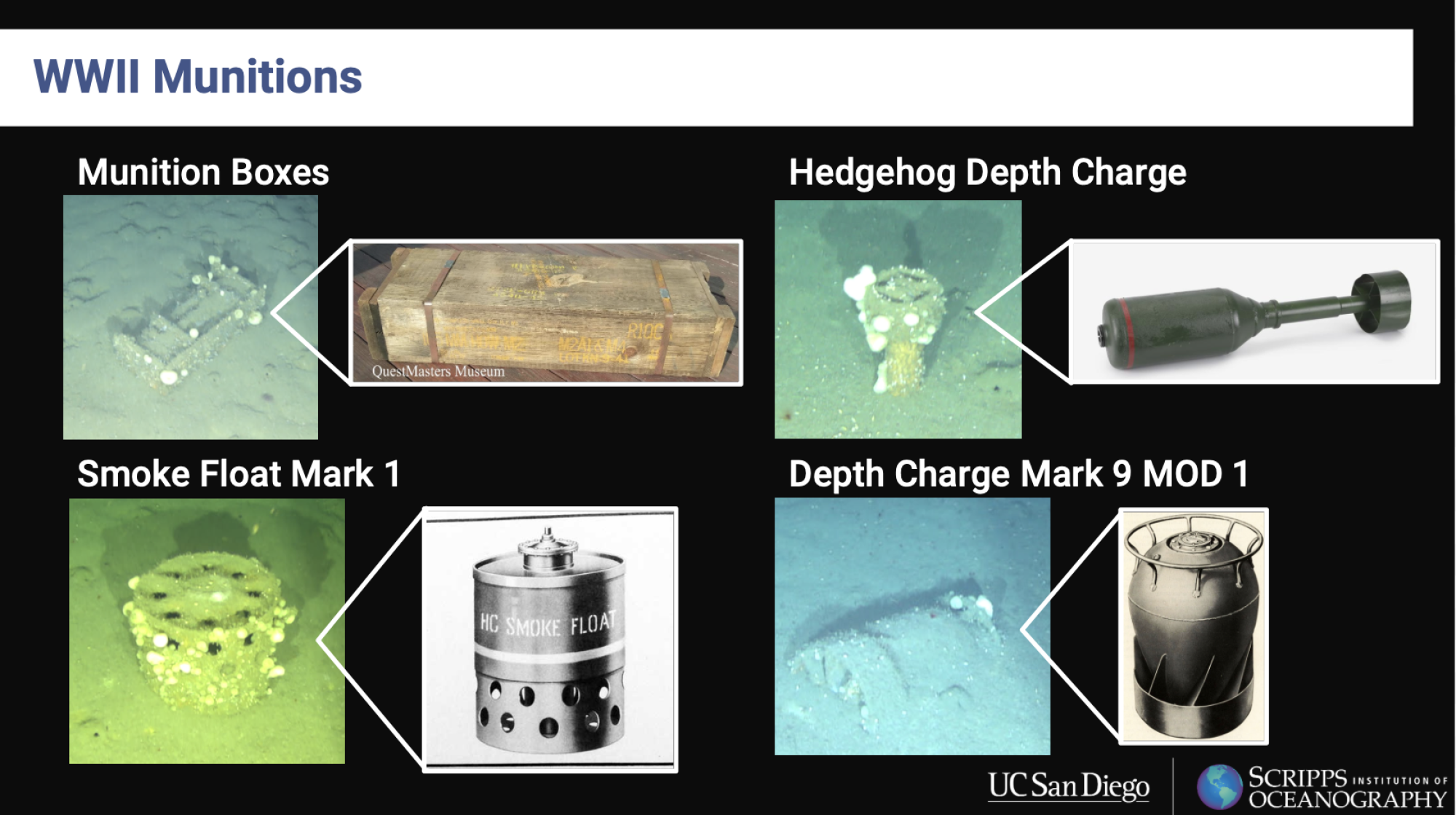
Among the munitions documented were Hedgehog and Mark 9 depth charges â explosives that were typically dropped from warships to attack submarines. Researchers also identified Mark 1 smoke floats â chemical smoke munitions that were dropped by ships to mark locations or to conceal their movements.
These findings, made public Friday, build on a stunning 2021 underwater sonar survey that identified tens of thousands of barrel-like objects between Los Angeles and Catalina Island. Merrifield and Terrillâs research team, assisted by a rare partnership with the U.S. Navy Supervisor of Salvage, set sail again last year â this time with even more advanced sonar technology, as well as a high-definition deep-sea camera that sought to visually identify as many objects as possible.
Discarding military waste at sea was not uncommon in decades past, but this once-forgotten history of ocean dumping continues to haunt our environment today. (A WWII-era practice bomb, in fact, washed ashore just last week in Santa Cruz County after a particularly high tide.)
The U.S. Navy has confirmed that what the Scripps team discovered âare likely a result of World War II-era disposal practicesâ and noted in a statement that âdisposal of munitions at sea at this location was approved at that time to ensure safe disposal when naval vessels returned to U.S. port.â Officials are now reviewing the latest Scripps findings and âdetermining the best path forward to ensure that the risk to human health and the environment is managed appropriately.â
catch up on more coverage
DDT was banned 50 years ago, but its toxic legacy continues to affect the California marine ecosystem and threaten various animal species.
Public interest in the legacy of ocean-dumping in Southern California has intensified since the Los Angeles Times reported that as many as half a million barrels of DDT acid waste had been unaccounted for in the deep ocean, according to old shipping logs and a UC Santa Barbara study that provided the first real glimpse into how the Los Angeles coast became an industrial dumping ground.
Dozens of marine scientists and ecotoxicologists have since convened regularly to discuss the data gaps in our understanding of DDT, a pesticide (banned in 1972) that was largely manufactured in Los Angeles and was so powerful it poisoned birds and fish. Congress â at the urging of U.S. Sen. Alex Padilla (D-Calif.) and the late Sen. Dianne Feinstein (D-Calif.) â allocated more than $11 million to work on the issue, and Gov. Gavin Newsom also boosted further research with an additional $5.6 million.
In another recent plot twist, an exhaustive historical investigation by the U.S. Environmental Protection Agency concluded that the pesticide waste had not actually been contained in barrels â rather, the chemicals were poured straight into the ocean from massive tank barges. In the process of digging up old records, the EPA also discovered that from the 1930s to the early 1970s, 13 other areas off the Southern California coast had also been approved for dumping of military explosives, radioactive waste and various refinery byproducts â including 3 million metric tons of petroleum waste.
Barrels of DDT waste â along with other chemicals â were likely poured directly into the ocean near Catalina Island, according to federal regulators.
âWhen the deepwater dumping was first uncovered in more detail by the team at UC Santa Barbara, the response was, âOh, my gosh, this is the tip of the iceberg.â And now weâre seeing just how big this iceberg is â we still donât even know how big it is,â said Mark Gold, an environmental scientist at the Natural Resources Defense Council who has worked on the DDT problem since the 1990s.
âWhatâs scary â as if we needed it to be more scary â is that weâre now up to more than 100 square miles of contamination from this dumpsite, with high DDT concentrations at depths that nobodyâs even ever looked before, and now weâre seeing all the other stuff that was dumped as well,â he said. âAnd itâs only what we see, from the standpoint of big munitions, as opposed to: How do we know there werenât other chemicals that were dumped by the Department of Defense?â
David Valentine, the UC Santa Barbara scientist whose marine research team first came across dozens of eerie-looking barrels, also emphasized that the less-visible pollution is more cause for concern. The legacy of DDT contamination is still haunting sea lions and dolphins in mysterious ways, and fellow researchers have traced high concentrations of the forever chemical all the way up the marine food chain to critically endangered condors.
In a sobering update Thursday, researchers shared their latest findings on the legacy of DDT ocean dumping off the L.A. coast â which turned out to be even more widespread than expected.
âWe canât lose sight of the 500-pound gorilla down there, which is the massive amounts of chemical waste that was dumped and spread all over the place,â said Valentine, who noted that the contents of the barrels his team discovered remain a mystery.
âNow that we know that the military had their thing going on, and that the chemical dumping was being bulk dumped, it really begs the question: So what else could have required being contained in these barrels?â he said.
Valentine, who has also been working with a number of scientists to piece together how DDT might be remobilizing from the seafloor, added that the latest high-resolution imaging from Scripps is instrumental in helping the entire research community understand what the seafloor actually looks like.
The deepest parts of the seafloor between Los Angeles and Catalina Island, in fact, had never been mapped before in this way. Locating specific objects across such a wide swath of seafloor has been likened to searching for the smallest needles in the largest haystack.
On the most recent expedition, a crew of nine Scripps researchers and 10 specialists from the Navyâs Supervisor of Salvage scanned the seafloor for more than 300 hours â capturing as many images as possible with high-resolution technology not typically available to scientists.
Patterns started to emerge. Object after object came into view, and the scientists found themselves processing and interpreting an overwhelming amount of data in live time.
Terrill, an oceanographer who also specializes in scouring the deep sea for downed military aircraft as a co-founder of the nonprofit Project Recover, tapped an underwater archaeologist on his team to help identify the vintage military debris.
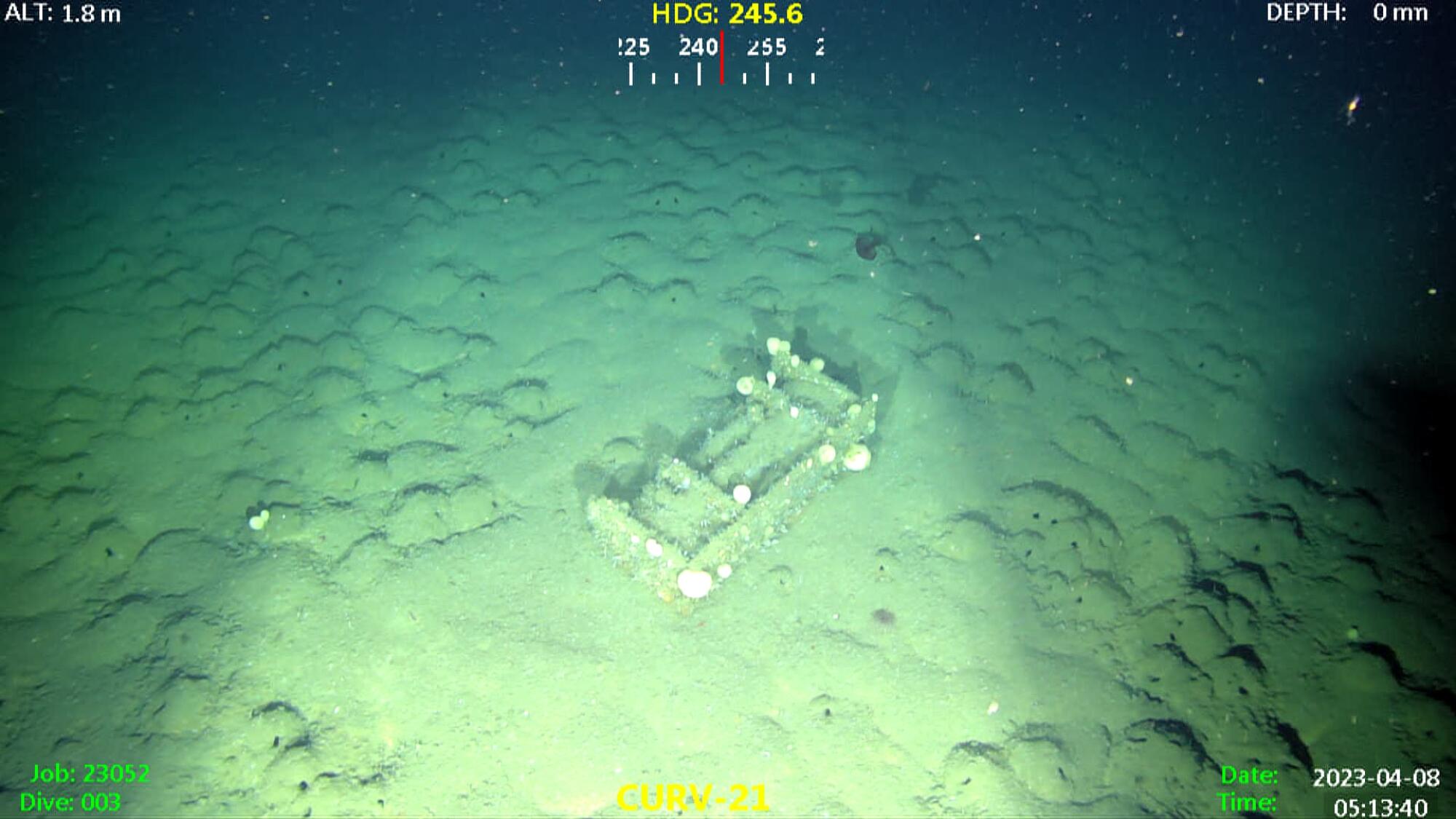
Another surprise for researchers was the discovery of scores of whale skeletons and carcasses, known as whale falls. Advanced sonar readings pinpointed potentially more than 60 whale falls, and researchers were able to visually confirm seven with their camera system.
Craig Smith, a professor emeritus of oceanography at the University of Hawaii who has dedicated much of his life to studying whale falls, noted that this finding is particularly groundbreaking in his field. Across the entire world, only about 50 naturally occurring whale falls have ever been identified, so locating 60 more off the coast of Los Angeles alone essentially doubles the number of known whale falls.
Many questions remain on why there appears to be such a high concentration of dead whales slowly decomposing off the coast of Southern California. Smith and his colleagues are eager to study this further.

âWhen we do population-level calculations, we estimate there may be on the order of 600,000 or more whale falls in the global ocean. But they fall more or less randomly, so theyâre hard to find,â said Smith, who noted that whale falls become fascinating yet elusive ecosystems for deep-sea critters.
Merrifield, the physical oceanographer who co-led the Scripps expedition, noted there remains an immense amount of new data to refine and analyze. Her team was able to capture high-resolution images of different seafloor textures, for example, as well as mounds that might indicate small burrowing animals that could stir up any chemicals half-buried in the sediment.
âNew technologies are really changing the way we look at the seafloor, and thereâs interdisciplinary problems from microbiology and remediation, to chemistry, to geology, to physical oceanography and transport that require all sorts of specialists to come together,â she said. âI hope the takeaway here is that maybe we didnât find what we thought we were going to find, but we found a lot of really important objects and insights that will hopefully lead to really good scientific outcomes for the community.â
